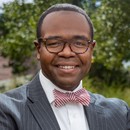For many, securing internet access throughout the day is an uphill climb. While libraries, computer labs and coffee shops may provide the necessary internet connection, they aren’t always accessible: Between work schedules and other obligations, the physical distance may be too much to travel, and their hours of operation may conflict with what a student or faculty member requires.
“We shouldn’t be hearing stories in indigenous and tribal communities of tribes having to climb to the highest peak within their respective areas and communities between the hours of 1 a.m. to 4 a.m. just so their children can access the internet,” Brownlee says. “This should not be happening.”
Brownlee goes on to say he believes this digital equity gap represents a lack of focus on national infrastructure. “What are we doing to ensure these communities are receiving the access that they need? The access equates to opportunity.”
DIVE DEEPER: Bringing connectivity to rural, tribal colleges.
An institution’s infrastructure is largely dependent on the infrastructure of the state in which it resides. Brownlee uses the state of Colorado to illustrate.
“Colorado doesn’t do local taxation. Everything is state appropriation,” he says. “And so, based on these various appropriations or local taxations, institutions can be prohibited from installing the kind of technology and offering the kind of accessibility — Wi-Fi hotspots, laptops, you name it — for their students to be able to have this access.”
It’s a trying situation and an uncomfortable position for higher ed leaders to be in. Still, educators can do a lot to address the digital divide.
Bridging the Digital Divide in Higher Education
Brownlee and his colleagues at the Community College of Aurora have been purposeful in the terminology they use, especially the phrase “equitable student success,” and there’s a reason.
“Those of us that are in these positions now of educating this country’s future and its current leaders, we have to really ask the question, ‘Have we embraced disruption in higher education?’” Brownlee says. “What I mean by that is there are multiple ways to achieve learning outcomes. Historically, in the academy, we’ve in some cases too often taken a one-size-fits-all approach to the attainment, the teaching and assessment of learning outcomes. If people truly learn in different ways, people understand and interpret and communicate in various different ways. And as an overall body of educators, now more than ever, we must embrace the various disruptions in the economy and society that are happening around us.”
DISCOVER: 6 ways to close the broadband gap between rural and urban students.
Online, hybrid and HyFlex learning are all a part of embracing this disruption. By providing a variety of synchronous and asynchronous learning opportunities, students of all types and backgrounds are able to learn in whatever way suits them best. But first, students must have accessibility to this access. As Brownlee explains, you can’t adjust access without accessibility. They have a symbiotic relationship, and that’s something students can’t afford for institutions to overlook.
“It’s imperative that the academy embrace this ideology, to say there are multiple ways to get to the finish line,” says Brownlee. “Because if we keep doing this one-size-fits-all approach, we’ll continue to put up barriers for students. Those of us in the community college space, we’re open-access as a part of our mission. You can’t afford to put up barriers. It’s not a part of who we are.”
The Community College of Aurora is taking this seriously by continuously self-evaluating to best embrace the disruption of higher education and service their students accordingly. Leaders at the school strive to create pathways rather than barriers — and it’s been working.












